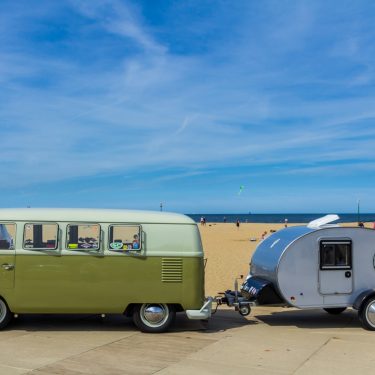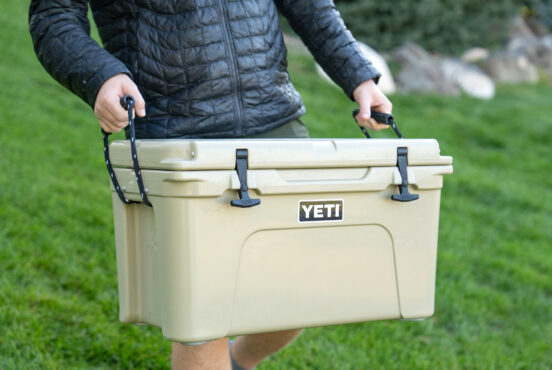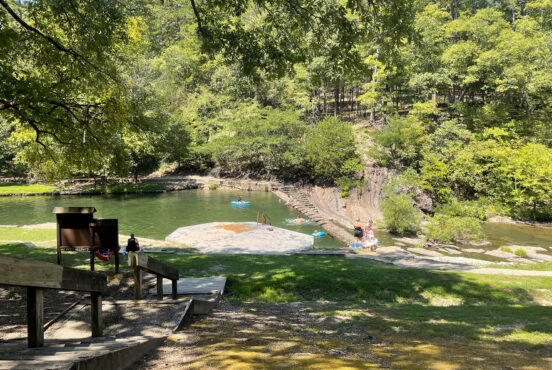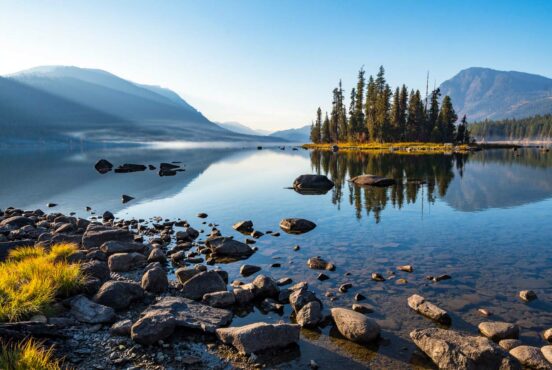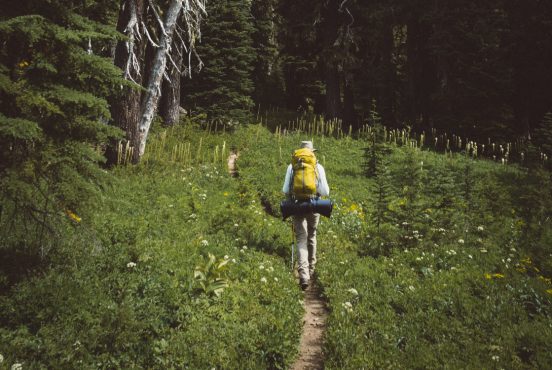Ditch the gas guzzlers and diesel engines. Take your glamping to the next level with our favorite lightweight trailers that are perfect for the next generation of travelers.
Gone are the days of spending a fortune on gargantuan campers and travel trailers and the gas-guzzling vehicles required to tow them. It’s easier than ever to bid adieu to the bigger-is-better RV trends of the past with a new era of small campers built for the next generation of adventure travelers.
This shift has led to the advent of an exceptional array of lightweight travel trailers and campers suitable for mid-sized SUVs, normal-sized trucks, and even capable cars. The most straightforward travel trailer and camper options are entry-level, budget-friendly, and even boast better resale value compared to their colossal counterparts.
Ready to get started? Explore our list of top picks for small campers and travel trailers, all ready to make your camping weekend the best you’ve ever had….until the next one rolls around.
1. Happier Camper HC1
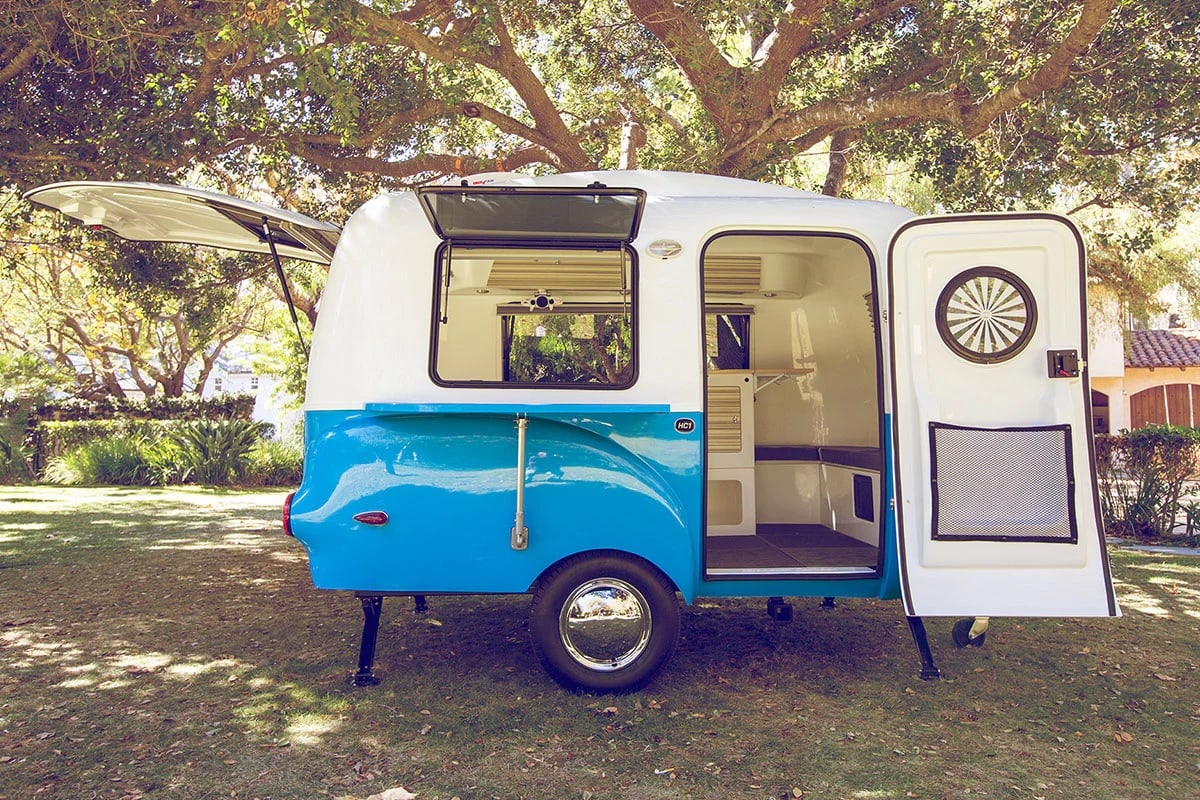
This retro fiberglass darling has enough viral-worthy visual charm that you’re sure to be stopped for soon-to-be-posted social media snaps everywhere you happen to adventure. Compact and nimble, the Happier HC1 effortlessly navigates paved wildscapes, city cruising and tucks right into tight spaces when you’ve found the perfect place to park for the night.
Beneath the vintage exterior, Happier Campers all offer entirely innovative modular interior sleeping, toilet, shower and kitchenette design options that will have you drooling at the floor plan possibilities. Our own personal tour of the HC1 had us experiencing how easy it can be to lose sight of our own personal adventure travel needs due to customization overload (and delight).
As happily distracting as this camper cutie is, we had to remind ourselves that more customization often means less interior space to work with — it’s a tradeoff.
The Details:
- Empty/dry weight: 1,100 lbs.
- Exterior length, width and height: 13’5″ x 7’ x 7’
- Sleeps up to: Customizable
- Price: $24,950
Pros and Cons
- Pro: Show-stopping aesthetic
- Pro: Fits in most places, including a single parking spot
- Pro: More affordable than other options
- Con: Clearance for opening the back hatch door of the HC1 must be considered when backing into any given space.
- Con: Happier Campers are not readily available for immediate purchase.
2. Winnebago Micro Minnie
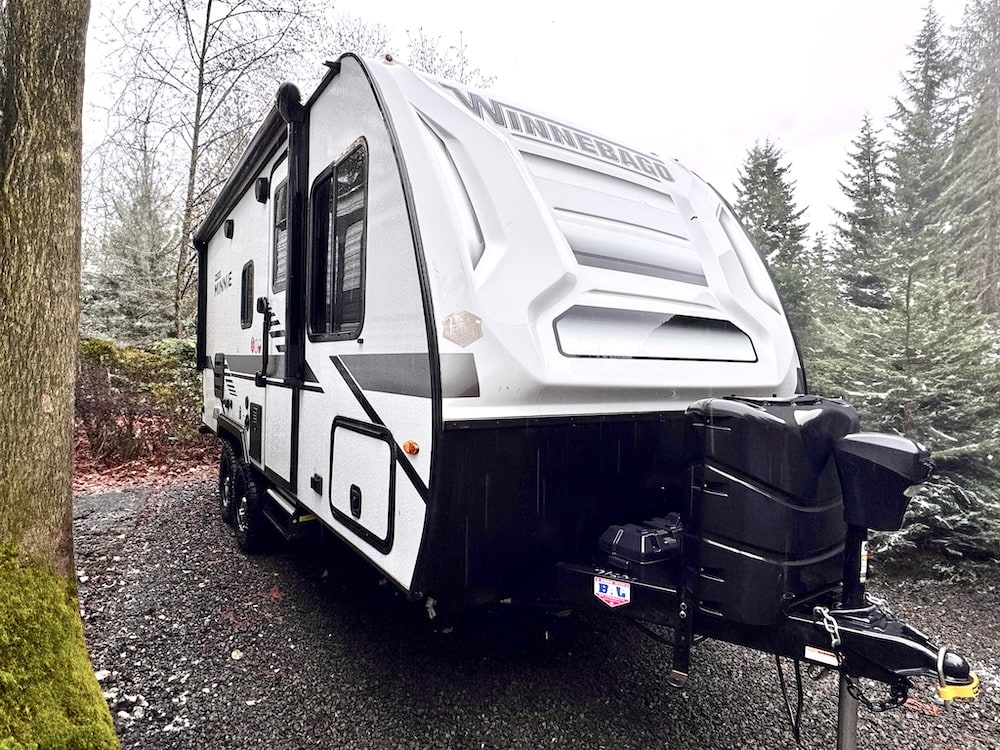
Winnebago established itself in the RV industry in 1958 with its original behemoth–sized models and long-standing reputation, which makes the Micro Minnie series a convenient offering for those who want to travel in a compact and affordable way.
This downsized series comes in at just seven feet wide. But, the Micro Minnie offers 12 interior and exterior layout options to choose from for your home away from home depending all upon your travel needs. Recreating with your family? Sleeping and entertainment customizations are yours for the shaping. Looking forward to flexing your cooking skills while gazing upon a moonrise over those national park mountains? Just say the word and Winnebago has your chef covered. Need to hit all of the necessities to be a self-sufficient explorer? Toilet and shower options are yours for the taking.
No matter which floor plan you choose to go with, you’re definitely paying for the Winnebago name — this is a pricier option, especially for such a small size. Still, our tour had us falling in love with the luxe feel that comes with the Winnebago brand.
The Details:
- Empty/dry weight: Starting at 3,360 lbs.
- Exterior length, width and height: Starting at 19’ 5” x 7’ x 10’ 5”
- Sleeps up to: Customizable
- Price: Starting at $37,182
Pros and Cons
- Pro: Dual axles allow for more stable towing and easier backing
- Pro: Beautiful interior makes even boondocking feel luxurious
- Pro: Solid interior and exterior construction
- Pro: Best-in-class kitchen design includes a large fridge with separate freezer and window above the sink and stove
- Con: Smaller fresh, gray and black water tank capacity means less time to backcountry boondock before having to seek out a dumping station
3. Airstream Basecamp
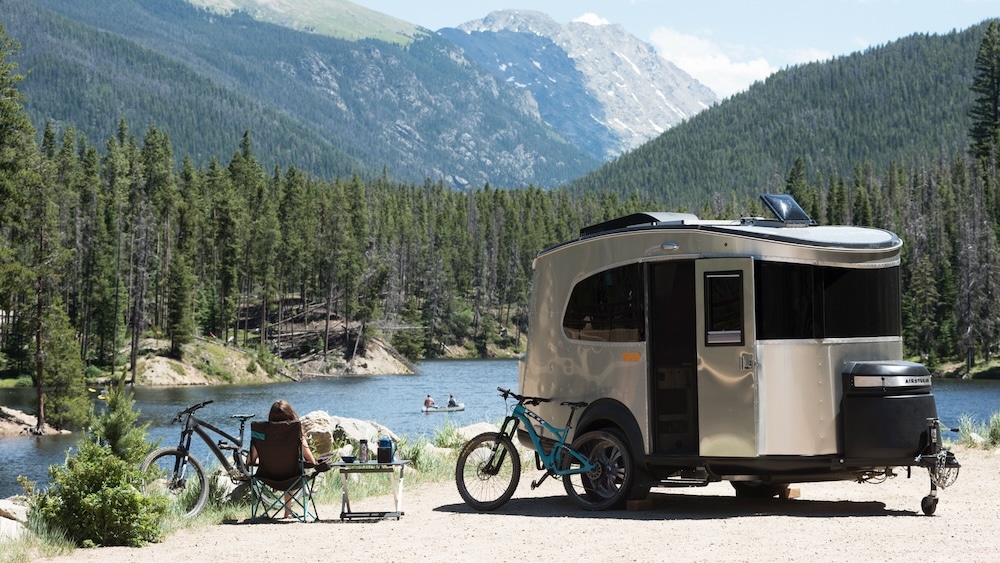
Airstream has earned its place as an iconic national symbol of the road-trip life. But what if an adventurer wanted to take their wheeled home off the paved path? The Basecamp travel trailer is Airstream’s answer to adventure for those who have smaller tow vehicles and backroad wanderlust.
Airstream’s shift away from larger campers earned awards over the years and even an ongoing partnership with REI (which shows who their target audience actually is). While still pricier than comparable trailers, the Basecamp offers a more accessible entry point into the Airstream experience compared to the brand’s larger “silver bullets.” This is thanks to its smaller size and lighter base weight. But never fear: it still comes decked out with the iconic, on-brand silver aluminum siding that makes Airstream easily identifiable anywhere in the country.
Despite its compact size, the Basecamp doesn’t sacrifice much. A well-equipped kitchen, bathroom, lounge area, and sleeping space seamlessly coexist in this sub-17-foot trailer. It feels surprisingly roomy within the limited square footage.
The Details:
- Empty/dry weight: 2,650 lbs.
- Exterior length, width and height: 16’ 2” x 7’ x 8’ 8.75” (depending on floor plan choice)
- Sleeps up to: 4 people depending on floor plan
- Price: Starting at $46,900
Pros and Cons
- Pro: Giant 180-degree front windows help the smaller space feel much bigger
- Pro: Classic Airstream aluminum aesthetic
- Con: Front facing window is prone to shattering when hit by kicked-up rocks. And, repair times are slow due to the custom, non-industry standard shape.
- Con: It’s pricier than most others on this list
4. Scamp 13′
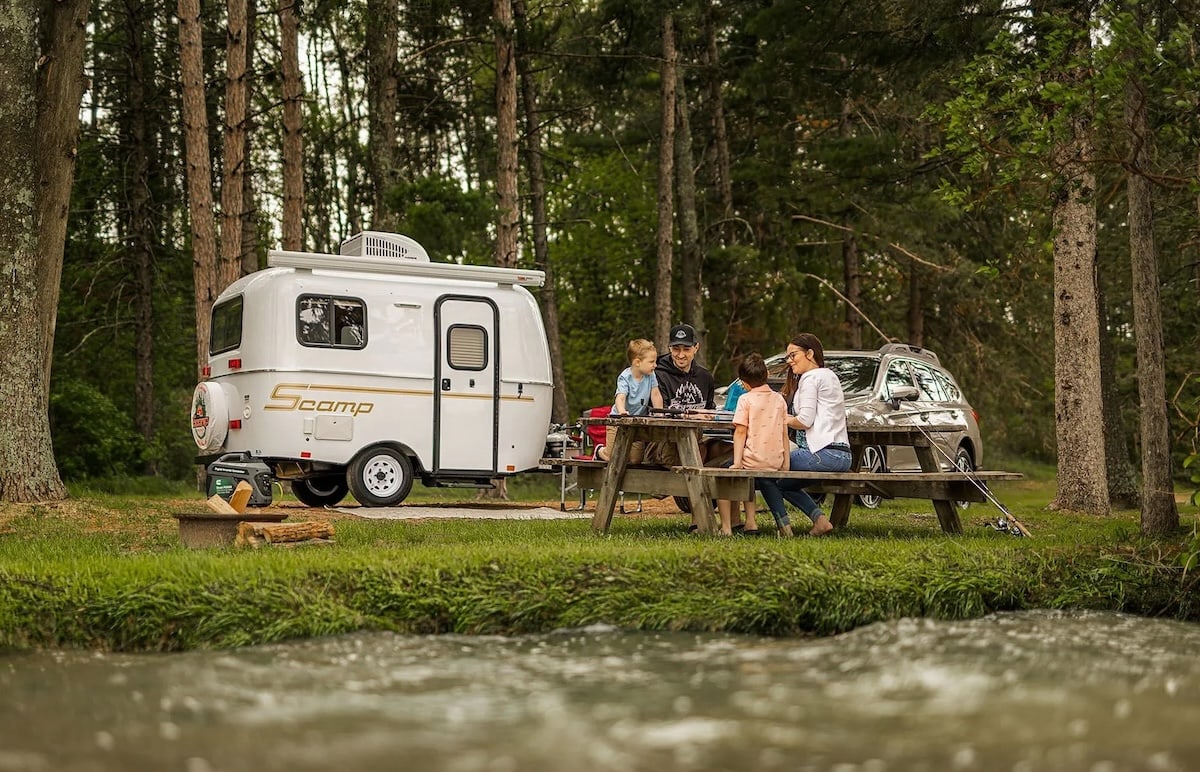
Born straight out of the funky grooves of the 1970s, Scamp has remained loyal to its iconic look over 50 years later. So beloved is this fiberglass design that an entire category was created when other brands (like Casita) followed suit with their own iterations of the nugget camper style.
Created to be small and lightweight, new Scamp trailer options include 13-, 16-, or 19-foot, highly customizable models. The tiny 13-foot option will turn heads and inspire social media posts with its charmingly small shape, while the 16-foot version stands out for its optimal balance between space and weight. The 19-foot version is the Big Boy. It lacks the same level of convenience and aesthetic appeal, ruling out all but those who are able to accommodate its fifth-wheel design (and totally excluding it from a “small camper” category).
Based on our experience, the Scamp is best for sticking to city streets, paved paths and established campgrounds unless you’re willing to haul extra gallons of water and other necessities. This tiny travel trailer will work hard to serve entry-level adventurers who stray outside for the majority of the day but appreciate the basic comforts of a warm meal, a hot shower, and a cozy place to sleep when the sun goes down.
The Details:
- Empty/dry weight: 1,200 lbs.
- Exterior length, width and height: Starts at 13′ x 6’8” x 7’6”
- Sleeps up to: Customizable depending on size and floor plan choice
- Price: Starts at $19,921
Pros and Cons
- Pro: Retro aesthetic
- Pro: Ultralight fiberglass exterior shell allows for easy towing with most cars
- Pro: Quite affordable compared to most other campers
- Con: Toilet and shower do not come standard with the base package
- Con: Barebone amenities and minimalist construction
5. nuCamp TAB
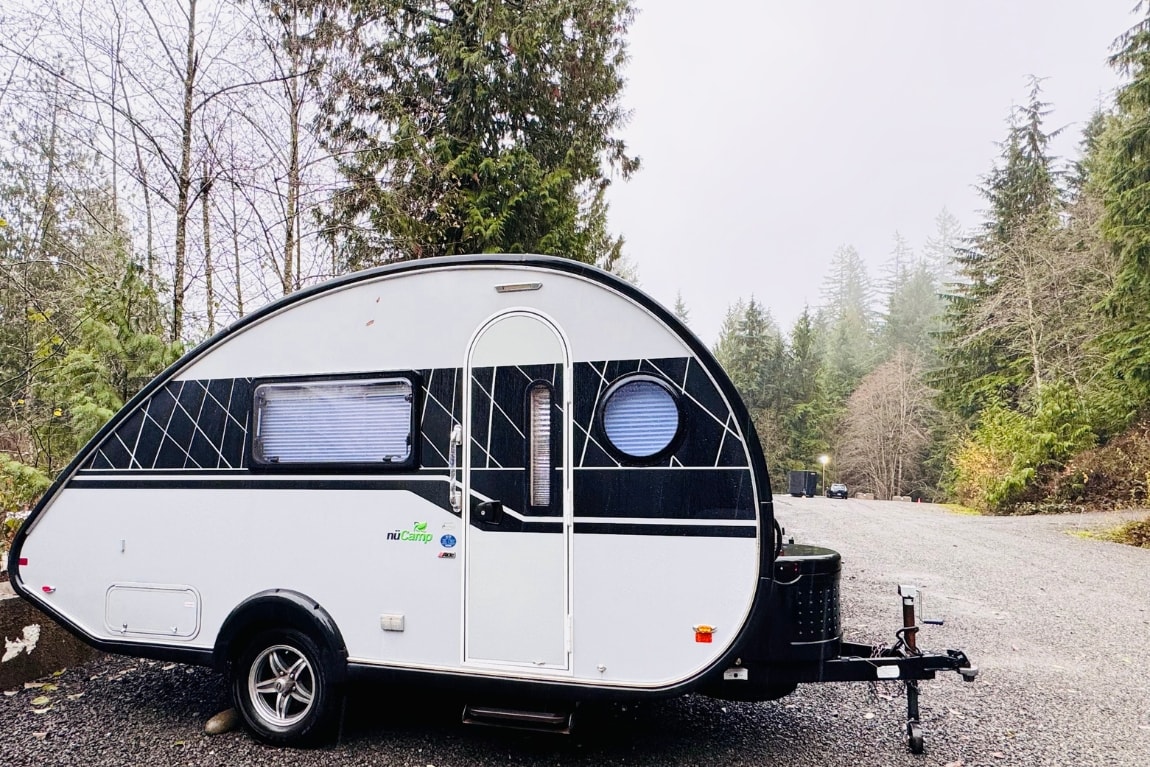
Teardrop-style campers first came on the scene in the 1930s with an interesting marketing angle as a honeymoon house trailer. By the time the 1940s rolled around, these minimalist dwellings on wheels were the travel trailer of choice for Americans wanting to leave their tent behind and step up their cozy camping game.
These days, the rounded front and tapered rear design of the distinctive teardrop travel trailer is still around, but with a twist. A host of upgrades and masterful redesigns maximize every single millimeter of interior space. (If you’re the handy sort, there are plenty of DIY teardrop kits available, too.)
We’d call the nuCamp a trailblazer in the modern teardrop camper industry. The nuCamp TAB series is compact, lightweight, and can be hauled by most crossover vehicles and SUVs. Its gnarly off-road tires and molded undercarriage shield are thoroughly thought out for those who want to leave well-worn paved highways behind but not vital camper parts when road conditions get rough.
Shockingly, some floorplans of the nuCamp TAB series have masterfully designed these minuscule spaces to fit a hot water system, air conditioning, a small kitchen, and a wet bath while out on your remote, rugged adventures.
Touring the interior of the nuCamp TAB had us inspired to take this teardrop trailer on a solo trip as the layout seems to be best suited for a party of one. Otherwise, treat this travel trailer as a welcome home base at the beginning and end of a long day trip when your adventurer’s agenda only includes checking off the most basic of needs.
The Details:
- Empty/dry weight: 1,994 lbs.
- Exterior length, width and height: Starts at 15’ 3” x 6’ 8” x 7’ 8”
- Sleeps up to: Customizable depending on size and floor plan choice
- Price: Starts at $33,990
Pros and Cons
- Pro: Base package includes heavy-duty tires, a pitched axle and electric brakes for confidence with off-road maneuvering
- Pro: Can be purchased immediately
- Con: Interior height is only 5’9” which is tough for taller folks
- Con: Large price tag for a camper that becomes easily crowded
What to Consider When Buying a Small or Compact Trailer
Before making a purchase, it’s important to consider these campers and RVs in person and thoroughly research each model to ensure it meets your specific personal requirements. For example, where do you like to camp? If you are a person who spends more time in a campground, an option like the Scamp with lower clearance and smaller tanks is a great bet. However, if you prefer to boondock and take your trailer off-roading, you’ll want more clearance and larger tanks so you can remain out longer. In this instance, a burlier option like the nuCamp TAB may be a better choice.
Additionally, keep factors like towing capacity, amenities, storage, and overall build quality top of mind. Walking through campers and trailers is always fun — they’re always so cozy! But don’t let the staged aesthetics deter you from your mission. Pay attention to the details like whether there is enough storage for your family and how easily your vehicle can tow the trailer. It doesn’t matter how cute the camper is if your vehicle can’t get it out of the driveway. And, always check for the latest reviews and updates on models, as the RV industry is continually evolving.
Hit the Road
Sign up for Weekend Wanderer to join 10,000+ readers getting epic travel ideas every week.

